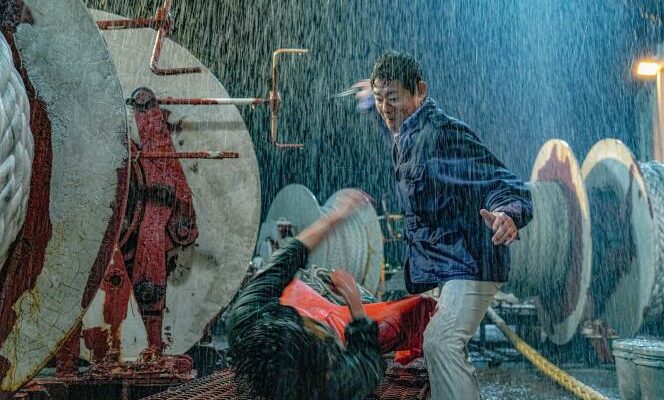THE OPINION OF THE “WORLD” – TO SEE
Wolf Hunting Project affirms the great return of a strongly nihilistic tradition of Korean popular cinema. The prescriptions of the action film are combined, and even surpassed, by an imagery that is both raw and grotesque. The benchmarks are gradually shaken up by an orgy of graphic violence, the expression of a kind of desperate vision of things as well as a will, a bit ironic, to put the public in a trance.
We may not like that, or even think that the film comes from a culture of gratification with little regard for how to stimulate the viewer and, at the very least, a little childish. We can also salute the sovereignty of a cinema that doubts nothing, a salutary remedy for the contemporary sanitization of this type of fiction when it is produced in Hollywood.
This fifth feature film by Kim Hong-seon for the cinema feeds its plastic fury from different, heterogeneous sources. The realism of a violent adventure story is suddenly thwarted, then boosted, by the speculations of a science fiction postulate.
Following what we guess is the application of an extradition procedure, dangerous criminals are transported in the hold of a cargo ship, from the Philippines to South Korea. Thanks to the intervention of accomplices, the prisoners are freed and attempt to take control of the ship. But the heavy boat also carries, in its depths, a mysterious creature, the result of scientific experiments and genetic manipulations. The monster is a kind of invincible supersoldier who, after having freed himself, undertakes, pure machine to massacre, to exterminate the survivors without distinction.
Hectoliters of hemoglobin
The unexpected appearance of the creature submits the film to a kind of hybridization, experimental and ironic. In the enclosed space, prohibiting any escape, of the ship, the skulls explode cheerfully and hectoliters of hemoglobin are poured out in an unleashing of violence. A violence that reveals a humanity almost entirely deprived of any possible redemption, with the exception of a beautiful female character, a female cop who will try to resist the general chaos.
Korean cinema confirms its ability to transmute into extravagant filmic objects the traumas of an upset national destiny
There is also, however, in this display of graphic brutality the expression of the return of a historical repression. The origins of the bloody creature go back to criminal medical experiments undertaken by the Japanese occupation army during World War II. The excesses of gore underline the persistence of a history that still does not pass, and Korean cinema confirms its ability to transmute into extravagant filmic objects the traumas of an upset national destiny. The latest news is that Kim Hong-seon is preparing both a sequel and a prequel to the film.
You have 2.85% of this article left to read. The following is for subscribers only.
